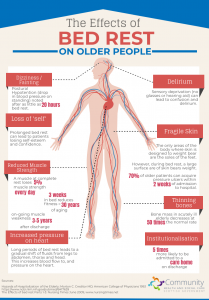Health and Social Care
Support for Hospital at Home Services
March 2, 2020 by Isla Bisset No Comments | Category Hospital at Home
 £1 million funding has been made available in the Scottish Budget to support the development of Hospital at Home services (read full news release here). Hospital at Home is a different way of working where acute hospital care is provided in a person’s own home as an alternative to traditional hospital admission. The service can treat people with a wide range of conditions, such as pneumonia, complex falls, COPD or pulmonary embolism.
£1 million funding has been made available in the Scottish Budget to support the development of Hospital at Home services (read full news release here). Hospital at Home is a different way of working where acute hospital care is provided in a person’s own home as an alternative to traditional hospital admission. The service can treat people with a wide range of conditions, such as pneumonia, complex falls, COPD or pulmonary embolism.
Jeane Freeman, Cabinet Secretary for Health and Sport discussed the value of hospital at home in a recent presentation to the Hospital at Home conference on Tuesday 18 February 2020.
The Health Secretary stated:
We need to instil a ‘Home First’ ethos into the thinking of all health and social care staff, patients and their families. Everyone’s first thought needs to be “why not home?”
I am keen to see all health and social care partnerships across Scotland provide sustainable, person centred, alternatives to traditional hospital care. Services such as reablement, rapid response teams, enhanced Intermediate Care at home, virtual community wards, and of course hospital at home all have a vital part to play, alongside the more traditional community based services.
You can watch the Cabinet Secretary’s whole speech on our YouTube Channel.
Why do we need Hospital at Home
Older people with frailty are the single biggest users of hospital beds and the fastest growing demographic. Across the UK the population of over 85s is predicted to double between 2018 and 2043.
Long hospital stays, particularly for older frail people, can lead to an unnecessary loss of independence and functionality. For example, evidence shows that 3 weeks of bed rest is equivalent to 30 years of aging.
30% – 56% of older people have been shown to experience a reduction in their functional ability between admission to hospital and discharge.
Keith Dean, a 71-year-old from East Wemyss in Fife, has benefitted from the service. He said:
“I have been a patient of hospital at home for many years and I am grateful for the service. I needed intravenous antibiotics about twice a year, and before Hospital at Home I needed to stay in hospital for two weeks at a time.
“Now the nurses come into my own home and give me the medication. As you are at home and not in a hospital environment you’re not open to getting other infections so your recovery is much better.”
Hospital at Home Guiding Principles
Healthcare Improvement Scotland has published a new guide to hospital at home – Hospital at Home – Guiding Principles for Service Development, Healthcare Improvement Scotland.
The guide brings together and reviews the published evidence on the effectiveness and safety of Hospital at Home initiatives for older people with frailty and shares learning from existing services across Scotland. It is intended to assist in local and regional planning for acute and specialist services to support people, who would ordinarily require admission to an acute hospital, to receive treatment at their home.
Key features of Hospital at Home
When specialist acute care is needed, hospital at home can provide an alternative to admission to an acute hospital bed.
The hospital at home guide describes a variety of different models and approaches through which such a service can be delivered, but all share certain key features.
- The severity of the condition managed (such as sepsis or pulmonary embolism) differentiates Hospital at Home from other community service provision.
- A hospital specialist acts as a senior decision-maker and responsible medical officer, sometimes with the help of other grades of medical staff.
- It covers short, time-limited acute episodes of care and is not intended to prevent access to specialist acute care. Patients are treated as though admitted to hospital, but managed within their own home.
- It provides urgent access to hospital-level diagnostics, such as endoscopy, radiology or cardiology where necessary.
- It provides a different level of interventions, such as access to intravenous fluids and oxygen.
- Care is delivered by multidisciplinary teams of healthcare professionals complying with current acute standards of care.
- It complements other community-based health and care initiatives which support patients to remain in their own homes.

Source: Hospital at Home – Guiding Principles for Service Development, Healthcare Improvement Scotland, January 2020

